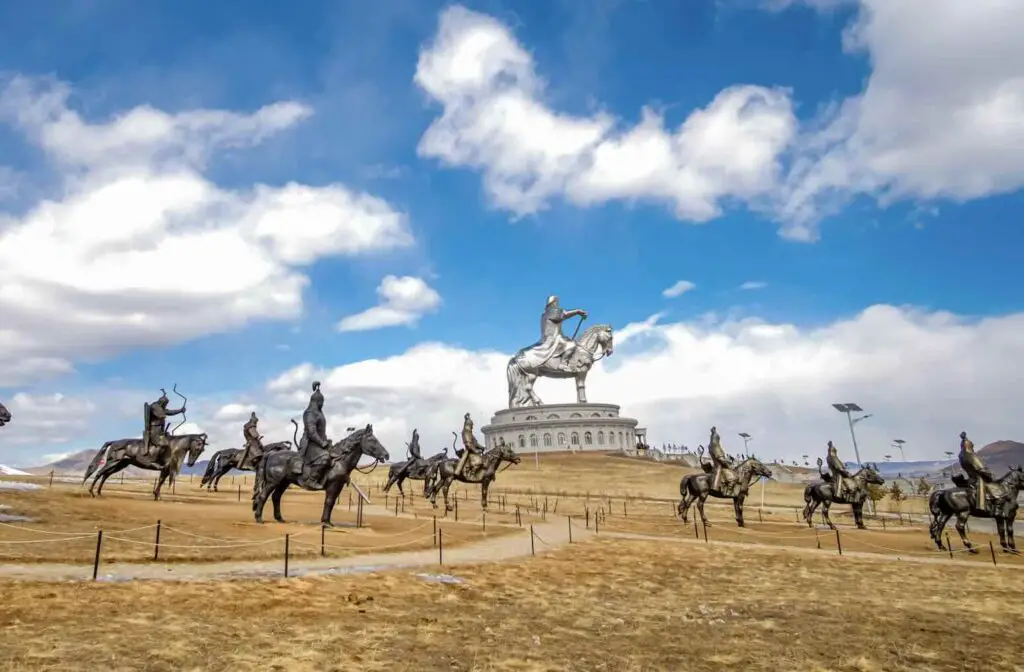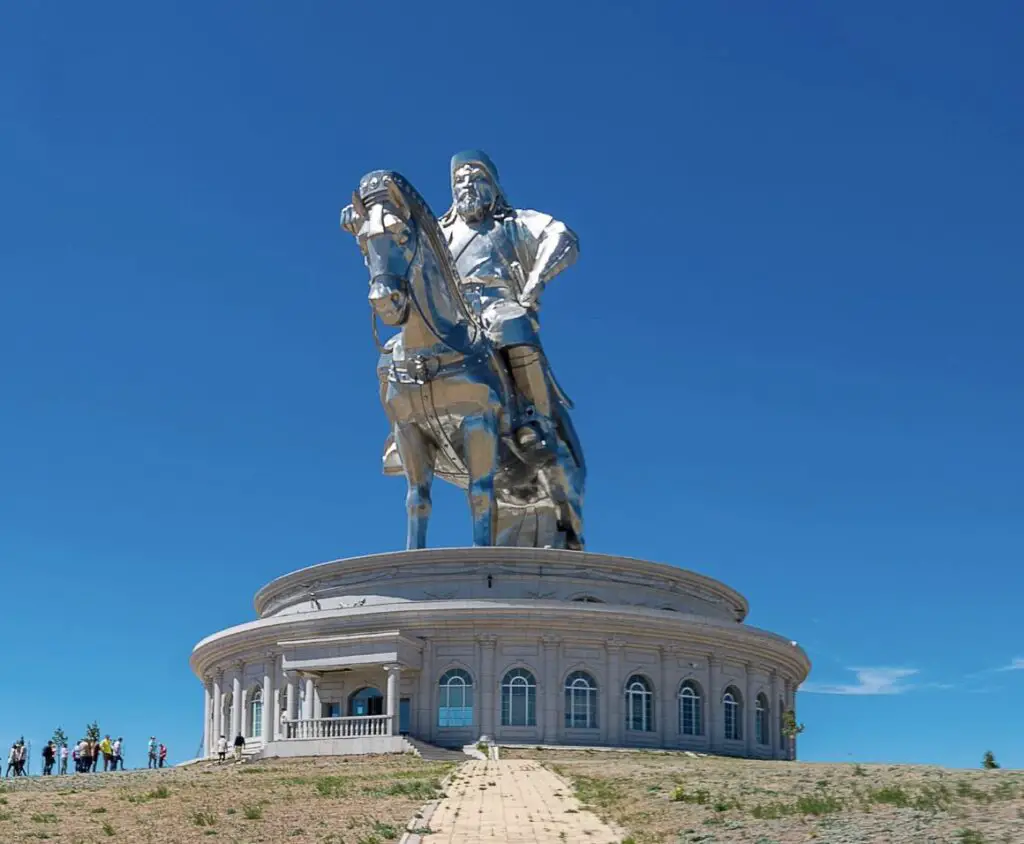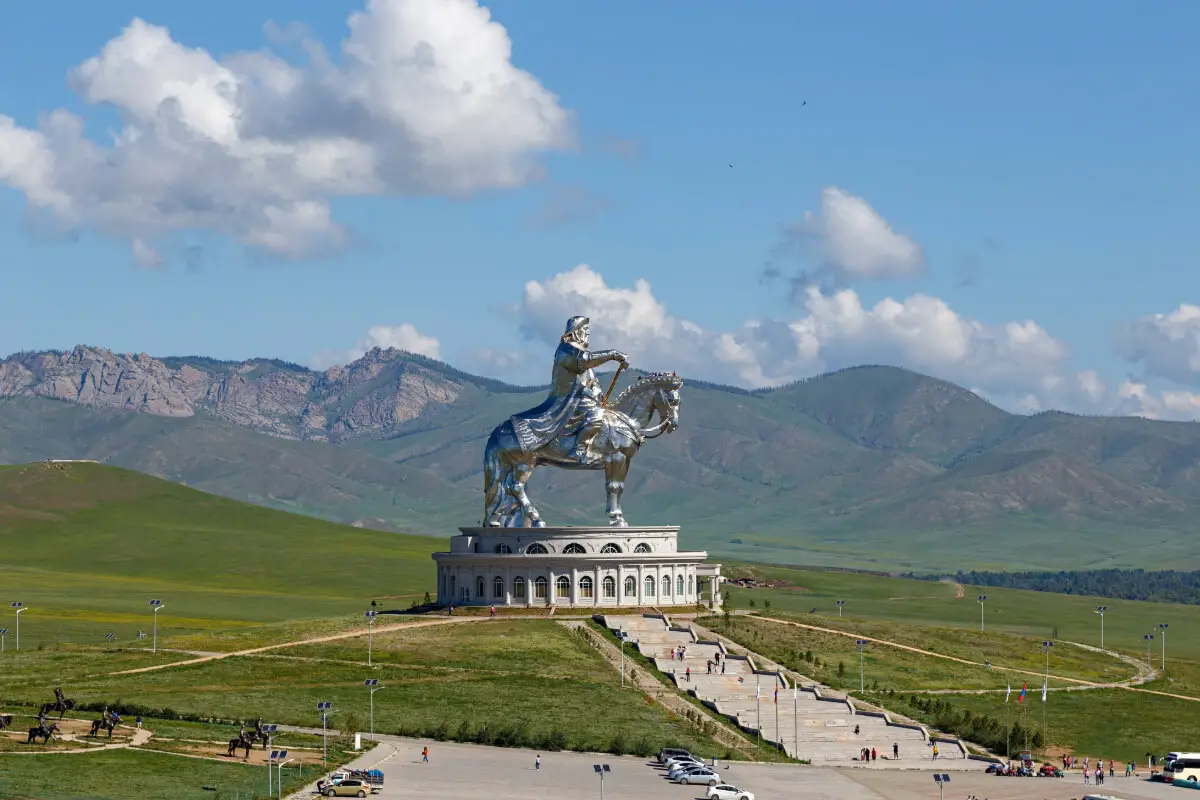Piercing through the veils of history to understand the religious beliefs of renowned figures often provides insights that transcend the individual alone and extend into the broader cultural milieu from which they emerged. This is particularly true when exploring the faith of Genghis Khan, a towering figure shrouded in history’s mists, who founded the Mongol Empire.
Born into the rich tapestry of Mongolian nomadic culture, his life and leadership were deeply influenced by the blend of animistic and shamanistic practices that characterized his homeland. What stands out starkly, however, is his links to Tengrism, an ancient Central Asian religion, and the fascinating religious pluralism he accommodated and even promoted. From Buddhism and Christianity to Islam, the empire under his rule was a veritable hub of religious coexistence and dialogue.
Table of Contents
- Religion in Mongolian Nomadic Culture
- Genghis Khan’s’ Personal Beliefs
- Religious Tolerance under Genghis Khan’s’ Rule
- Related Questions
Religion in Mongolian Nomadic Culture
Unveiling Mysteries: How Religion Shapes the Life of Mongolian Nomads
As impassioned explorers, we’re always on the watch for uncharted vistas, novel experiences, and intriguing cultures. While basking in the thrill of exploration, we often stumble upon extraordinary narratives woven deep into everyday life’s fabric. One such compelling tale is how religion continually shapes the day-to-day life of the Mongolian nomads.
Boasting a history steeped in folklore, magic, and mysticism, the Mongolian nomadic culture is a fascinating tapestry that intrigues every curious soul. Of the various threads within, the most vibrant one is religion.

The way it permeates every aspect of a Mongolian nomad’s life is captivating, illuminating how spirituality, nature, livelihood, and cultural practices unite to create an amazingly harmonious life.
The nomadic culture’s heart lies in a fascinating blend of Shamanism and Buddhism. Initially, the nomads were wedded to the rituals of Shamanistic belief, embracing the Spirits of the Sky, Earth, Fire, and Water.
Shamanism, embodying a direct connection between humans and nature, intertwined the sacred and mundane, influencing the nomadic lifestyle at its core.
Mongolian nomads revered the shaman as their spiritual guide, capable of communing with nature spirits, guiding nomadic policies, and curing ailments. Signs in nature were read as messages from spirits, directing essential decisions on migration, herding, and survival.
This deep-seated spirituality is evident even in the most straightforward folk traditions, such as the ”ovoo” – stone heaps adorned by prayer flags, where everyone passing by respectfully adds a stone, praying for safe voyages.
Eventually, Mongolian nomads welcomed Buddhism, a religion originating from the east, with open arms. They formed a harmonious blend, known as ‘Yellow Hat’ Buddhism, that beautifully tied together the nomad’s existing Shamanistic beliefs with new Buddhist traditions. This unity is demonstrated daily through chanting Buddhist scriptures, paying homage to deity statues, visiting monasteries, and participating in vibrant religious festivities.
Despite thick snow or arduous terrains, nomads often journey to monasteries, symbolizing their unwavering devotion. Lamas give them blessings and advice, becoming spiritual beacons in their nomadic journey. Lunar New Year, Buddha’s’ birthday, and other Buddhist events are grandly celebrated, bringing together the nomadic community to share joy, blessings, and memorable feasts.
The fusion of Shamanism and Buddhism gives the nomadic culture its distinct charm, showcasing an elegant blend of respect for nature, spiritual devotion, and communal unity.
So, next time you set your compass towards Mongolia, remember to witness the wonder of these spiritual practices in person. You’ll find it adds an entirely new depth of understanding to your exploration – a hidden world of tradition, spirituality, and enchantment within the sweeping steppes of Mongolia.
Genghis Khan’s’ Personal Beliefs
Navigate the Wandering Spirit of Genghis Khan: An Expedition into His Religious Beliefs
Stoking the furnace of wonderment, exploring Genghis Khan’s religious beliefs pulls back the canvas of a tent filled with awe-inspiring diversity and flexibility. This legendary conqueror, also known as the universal ruler, palpably differs from many figures of history, as he wasn’t steered by a single religion but embraced religious plurality.
He embodied a river flowing into an ocean, unreserved in his acceptance and openness when encountering an array of faiths. His empire was a silken blend of Shamanism, Buddhism, Christianity, and Islam, with artists working together to paint the broad tapestry of his spiritual journey.
Residing under the vast Mongolian skies, intertwining Shamanism and Buddhism was as common as morning tea for nomadic tribes. Genghis Khan witnessed this perfect fusion, favoring Shamanistic rituals while acknowledging Buddhism’s wisdom. In this mosaic of spiritual beliefs, Christianity and Islam, far from being left behind in this grand caravan of faith, also found their niche.
Now, picture in your mind’s eye a fully donned warrior king standing on the precipice of a hilltop, beating entrails on a drum and invoking ancestral spirits. That is the Shamanistic influence on Genghis Khan, one so profound that it motivated every war strategy and peace offering he made.
Shamanism’s roots are planted deep within the soil of Mongolian culture; it is more than a practice, but rather a natural part of life, permeating every aspect, including healing, driving out evil spirits, and invoking goodwill.
Alternate the scene, and now imagine Genghis Khan mediating disputes or invoking compassion and wisdom in his strategies; here, we see the touch of Buddhism. While the Mongolian iteration of Buddhism still shares common threads with its Indian origin, it has been woven with unique aspects incredibly well-adapted to the nomadic lifestyle. Unsurprisingly, Buddhism’s teachings of adaptive mindfulness resonated with the nation’s great, nomadic leader.

Plus, don’t for a moment think Genghis Khan limited himself to Eastern philosophies; he was also open to embracing the monotheistic wave of the West. Nestorian Christianity found its place in this inclusive religious landscape, so much so that many of Genghis Khan’s close generals and kin were openly practicing Christians.
He surrounds himself with religious diversity extended to Islam, with some of his wives and advisors embracing this faith, showcasing a compelling example of tolerance and pluralism.
Identifying Genghis Khan’s personal religious beliefs is much like the tale of the blind man and the elephant; depending on where you stand, you’re bound to see a different face. His beliefs seem to tumble like a restless sea, ebbing and flowing, changing course with his nomadic lifestyle.
He was somewhat of a spiritual chameleon, immersing himself entirely in the teeming plurality of the world’s faith systems, adapting, assimilating, and making it his own.
Genghis Khan didn’t tether himself to a single religious anchor. Instead, he sailed freely across the vast ocean of spiritual beliefs, his compass open to every wind of wisdom, ever the emblem of an adaptable and ceaselessly curious world explorer.
His journey echoes into eternity, inspiring us to question, explore, and respect the spiritual paths trodden by everyone we meet on our global adventures.

Religious Tolerance under Genghis Khan’s’ Rule
Venturing into the story of Genghis Khan, one of the most intriguing aspects that paints a picture of him as more than just the feared Mongolian warrior is his globally-minded approach to religious tolerance. Genghis Khan was highly open to various religions, from the indigenous Shamanism to Buddhism, Islam, and even Nestorian Christianity.
Genghis Khan was known for his impressive strategic acumen in warfare, often fuelled by his adaptability and curiosity about diverse spiritual paths. Interestingly, the tenets of Shamanism were deeply woven into his expansive strategies and practices.
The Khan was a true nomad, not just in terms of his physical journeys but also in his spiritual explorations. He strung a delicate balance between his indigenous Shamanistic roots and the growing influence of Buddhism within the Mongolian cultural tapestry.
His acceptance of Buddhism, a religion that might seemingly clash with the nomadic lifestyle, significantly marks his open-mindedness. Khan’s’ approach to Buddhism was characterized by a discerning adaptation rather than a dogmatic acceptance.
The essence of Buddhism’s spiritual teachings was aptly interwoven with the Mongols’ spirit of resilience and freedom, enriching the nomadic lifestyle with profound wisdom and contemplative practices.
Continuing his inclusive approach, Genghis Khan showed a remarkable tolerance towards Nestorian Christianity and Islam. Reports suggest that Khan invited Christian missionaries to his court and interacted with them regularly, absorbing the wisdom of their teachings. Similarly, he respected Islam, allowing its followers to practice their religion freely and providing tax exemptions to mosques. This embracement of diversity symbolized the Khan’s magnanimity and worldly wisdom.
However, interpreting Genghis Khan’s religious stance as a fluster of confused loyalties would be misleading. Instead, it reflects a multifaceted and complex personality. He sought wisdom and beneficial doctrines from each faith, adopting a syncretic approach to spirituality. This curiosity, adaptability, and openness to diverse spiritual paths underscore Genghis Khan’s’ religious tolerance, offering a more nuanced understanding of his persona beyond the battlefield.
Genghis Khan’s religious tolerance provides invaluable insights into his leadership style, worldview, and exceptional ability to unite diverse tribes under one empire. This unique dimension of religious tolerance, combined with his unmatched strategic prowess, etch his name in the annals of war chronicles and the broader narrative of global cultural history.
So, the next time you’re standing amidst the sprawling Mongolian plains, remember that you’re standing not just in the territory of a renowned warrior but a world thinker, a pilgrim of diverse spiritual paths, and a symbol of religious tolerance – Genghis Khan.

The historical narrative of Genghis Khan, thus, presents a multifaceted perspective that not only elucidates his personal religious experiences but also reveals a broader frame of worldwide cultural exchanges and religious transfer.
From humble beginnings in the steps of Mongolia to establishing an Empire that reshaped global religious and cultural landscapes, his rule has left indelible marks that continue to be explored today.
His reign encapsulates a striking case of religious tolerance and cross-cultural interactions, whether through the flourishing of diverse holy places within his sphere of control or the diffusion of religion along the Silk Road. As such, understanding Genghis Khan’s’ religion goes beyond the man himself, leading us into a grand narrative of interconnected global histories and enduring influences.
At A Bus On A Dusty Road, we talk about everything about travel, life, sailing, and ex-pat living. We are all about “Living Life As A Global Citizen.” We explore social, cultural, and economic issues and travel.
We would love to have you be part of our community. Sign up for our newsletter to keep up-to-date by clicking here. If you have any questions, you can contact me, Anita, by clicking here.
Listen to our Podcast called Dusty Roads. You can find it on all major podcast platforms. Try out listening to one of our podcasts by clicking here.
Subscribe to our A Bus On A Dusty Road YouTube Channel filled with great videos and information by clicking here.
Related Questions
Mongolia’s Genghis Khan Statue: Mongolia’s Love for Genghis Khan
The Genghis Khan Statue Complex is outside Ulaanbaatar, Mongolia. This statue commemoration of the Mongolian leader, Genghis Khan, who ruled Mongolia in the early 1200s. Despite his challenging childhood, Genghis Khan rose to become one of the greatest and most powerful leaders of his time. Genghis Khan and his army conquered many parts of the world, including part of China, to the present-day Capsian Sea area.
By clicking here, you can discover Mongolia’s Genghis Khan Statue: Mongolia’s Love for Genghis Khan.
How Tall Was Genghis Khan And Other Facts
When history talks about the famous Mongolian warrior Genghis Khan, they talk about him as a giant or extremely tall. Even today in Mongolia, you can see a statue outside the Ullanabaator that shows a giant Genghis Khan.
By clicking here, you can discover How Tall Was Genghis Khan And Other Facts.
Death Of Genghis Khan: The Conqueror’s Mysterious Death
Genghis Khan’s presence loomed large, and he was revered and feared for his vast conquests across Asia. Yet, while many recognize his achievements in life, few understand that the circumstances of his death were shrouded in as much mystery as his legendary exploits.
You can find out more by reading our blog, Death Of Genghis Khan: The Conqueror’s Mysterious Death by clicking here.


